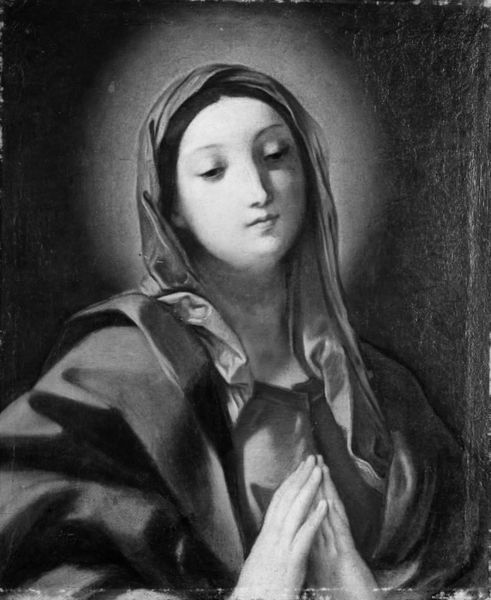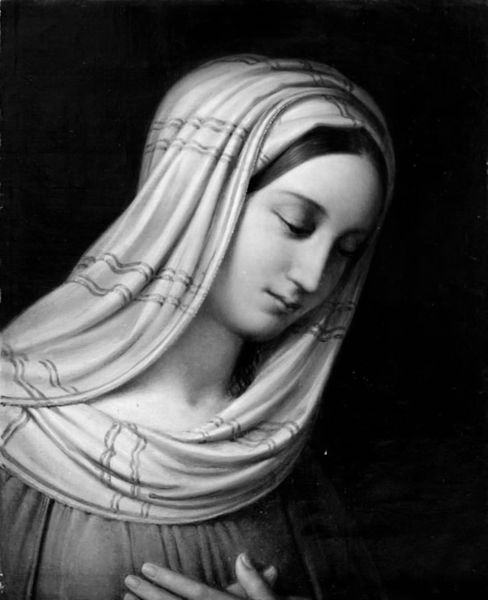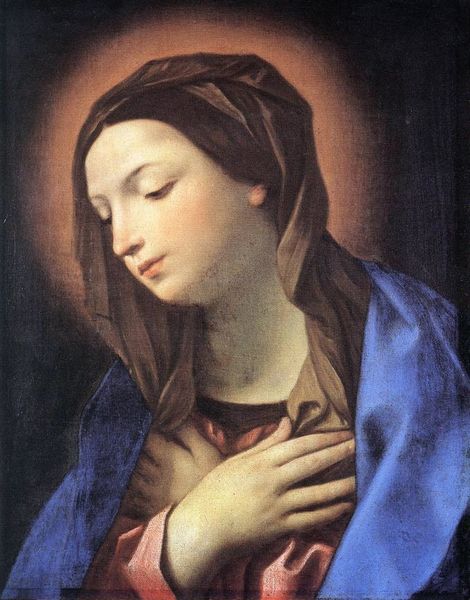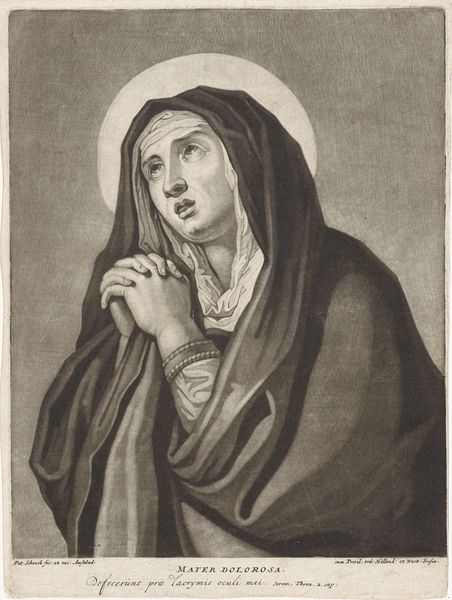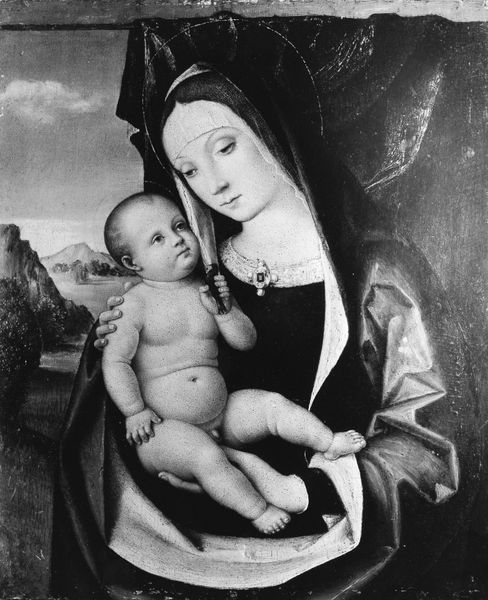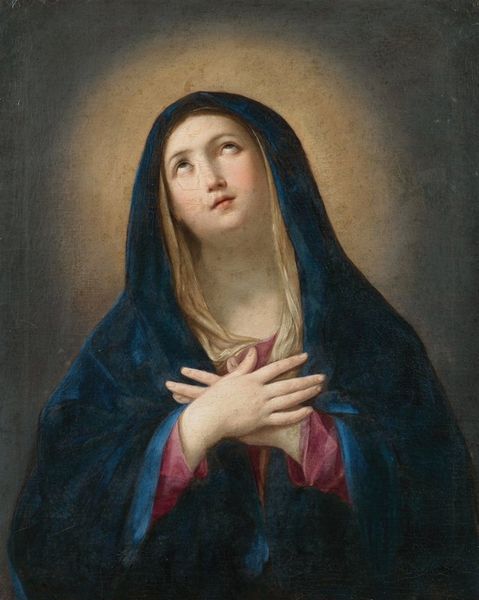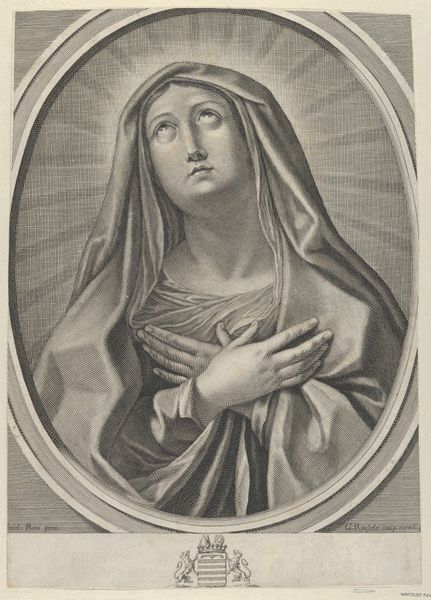
painting, wood
#
portrait
#
portrait
#
painting
#
romanticism
#
wood
#
history-painting
Dimensions: 15.5 cm (height) x 11 cm (width) (Netto), 23 cm (height) x 19.1 cm (width) x 4.5 cm (depth) (Brutto)
Editor: Here we have J.L. Lund’s “Magdalene med salvekrukken,” or Magdalene with the ointment jar, painted sometime between 1816 and 1827. It's an oil on wood. She has such a somber, reflective expression. What kind of social and cultural forces might have shaped this portrayal? Curator: That's a crucial question. We have to consider the Romanticism movement’s interest in emotion and religious themes but also, the evolving role of women in the 19th century. The image of Mary Magdalene, particularly her repentance and devotion, became a socially acceptable model of femininity and redemption. Do you notice the specific setting Lund chooses? Editor: Yes, the crosses on the hill in the background. They highlight the religious aspect and the narrative of the Passion. Was there a specific audience this painting was trying to reach or appeal to? Curator: Definitely. Remember that at this time, the art world was increasingly shaped by public institutions. Exhibitions at the Statens Museum for Kunst, where this painting resides, presented art to a broader, often middle-class, audience. Lund's work appealed to a desire for moral uplift and religious reflection, consistent with conservative values promoted by both church and state. Editor: So, it’s more than just a portrait of a saint; it’s participating in a larger societal conversation. I see that now. The museum, then, wasn't just a place to view art, but also a stage for shaping public sentiment. Curator: Exactly! Consider how subsequent reproductions and critiques of images like these have played a crucial role in perpetuating certain gender and religious norms in the broader cultural sphere. What do you think about this painting now, knowing the complex historical landscape? Editor: It definitely prompts me to question the seemingly straightforward representation of a religious figure and to consider how artistic choices can be subtly yet powerfully influenced by the socio-political climate. Curator: Precisely. Art always reflects—and shapes—the society in which it exists.
Comments
No comments
Be the first to comment and join the conversation on the ultimate creative platform.
